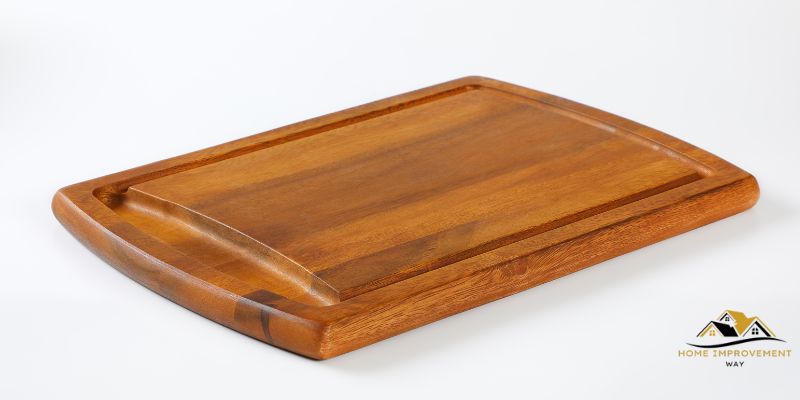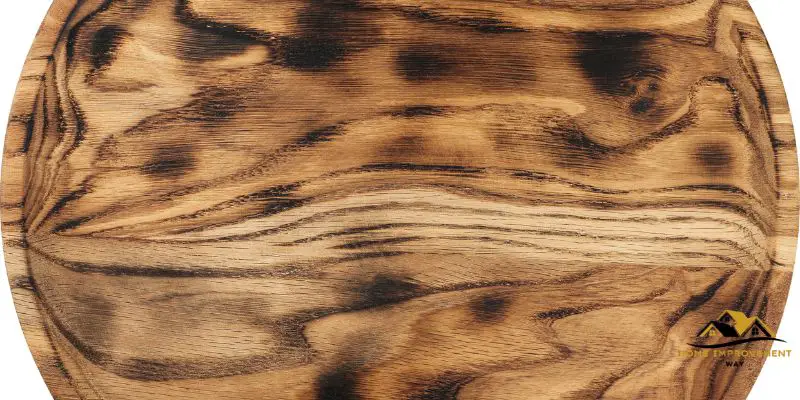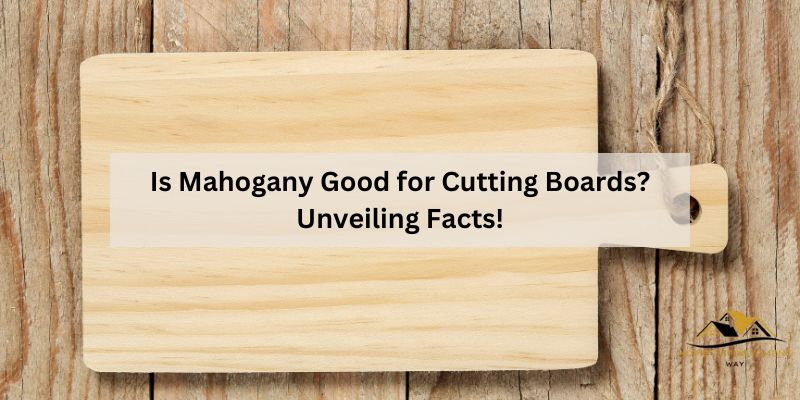Mahogany is not typically recommended for cutting boards due to its lack of hardness. It can dull knives and is more prone to scratches and damage.
Mahogany’s rich color and fine grain have made it a popular wood in furniture making, evoking a sense of luxury and durability. In the realm of kitchenware, particularly cutting boards, wood choices matter significantly for both hygiene and tool maintenance.
While hard maple and teak mostly top the list for their density and self-healing properties, mahogany doesn’t match up. It’s softer than ideal woods, leading to visible cut marks and a reduced lifespan of the board. Beyond aesthetics, the right cutting board can also ensure that knives stay sharper longer, making prep work easier and safer. Thus, chefs and home cooks generally prefer harder woods that withstand frequent chopping and slicing.
The Strength And Durability Of Mahogany
Mahogany’s remarkable resilience makes it a top choice for crafting cutting boards. Its dense fibers resist warping and deter moisture absorption, essential qualities for withstanding the rigors of daily kitchen use.

Natural Resilience To Wear And Tear
- Dense wood fibers provide a solid cutting surface that does not dull knives.
- Preservation of the board’s appearance and feel, despite heavy use.
- Less maintenance needed compared to softer woods.
Resistance To Moisture And Warping
The inherent properties of mahogany also offer exceptional resistance to moisture absorption. This quality is essential in preventing the growth of bacteria and the possibility of warping, which can affect the board’s structural integrity. The remarkable moisture resistance is characterized by:
| Feature | Benefit |
|---|---|
| Natural oils | Creates a barrier against water penetration, enhancing the board’s lifespan. |
| Tight grain structure | Minimizes spaces where moisture can accumulate, keeping the board straight and flat. |
| Stability in varied conditions | Prevents deformation from temperature fluctuations and humidity, ensuring a consistent cutting surface. |
Mahogany As An Ideal Cutting Board Material
Mahogany’s fine grain and durability make it a superior choice for cutting boards. Its resistance to moisture and wear aligns with the needs of culinary enthusiasts seeking long-lasting kitchen tools.
Comparing Its Hardness With Other Popular Wood Types
| Wood Type | Janka Hardness Rating (lbf) |
|---|---|
| Mahogany | 800-900 |
| Maple | 1,450 |
| Bamboo | 1,380 |
| Walnut | 1,010 |
| Teak | 1,070 |
The Significance Of Grain Tightness
- The tightness of the grain helps to prevent bacteria accumulation, making mahogany cutting boards more hygienic than those with larger and more open grains.
- A smooth grain surface is less prone to scratching and scarring from knives, thereby extending the life of the board.
- Due to its interlocking grain, mahogany is less likely to warp or crack compared to woods with more open or uneven grains.
The Safety And Hygiene Aspect
Prioritizing safety and hygiene in the kitchen is paramount, especially when it comes to the surfaces that come in contact with our food. A cutting board is at the heart of food preparation, which is why selecting the right material is vital. Mahogany, a wood esteemed for its beauty and durability, is often a topic of discussion. To understand its suitability as a cutting board material, it’s essential to delve into its antimicrobial properties and the maintenance it requires.

Understanding The Antimicrobial Properties Of Mahogany
- Natural Defense: Mahogany wood contains organic compounds that are resistant to bacterial growth and decay.
- Porosity: The dense grain of mahogany means fewer pores, reducing the areas where bacteria can thrive.
- Durability: The hard surface resists scratches and cuts where bacteria can lodge and multiply.
The Ease Of Cleaning And Maintenance
- Rinse the board with hot water immediately after use.
- Use a mild detergent and a scrubbing brush to clean the surface.
- Rinse thoroughly to remove any residual soap.
- Dry the board standing up to allow air circulation and prevent moisture retention, which can lead to bacteria growth.
- Occasional oiling with a food-grade mineral oil can help maintain the wood’s natural defenses and enhance its longevity.
Sustainability Considerations
Exploring the suitability of mahogany for cutting boards reveals important sustainability considerations. Selecting mahogany necessitates evaluating its durability and environmental impact, ensuring your kitchen choices align with eco-friendly practices.
Analyzing the eco-friendly aspects of using mahogany
Analyzing The Eco-friendly Aspects Of Using Mahogany
| Property | Eco-Friendly Benefit |
|---|---|
| Durability | Long-lasting, fewer resources needed for replacement |
| Biodegradable | Lesser impact on landfills upon disposal |
| Non-Toxic | Safe for food contact and the environment |
Examining The Impact On Deforestation
- Loss of biodiversity: Tropical forests are home to a vast array of species.
- Climate change acceleration: Trees play a vital role in carbon sequestration.
- Erosion and soil degradation: Trees maintain the health and cohesion of soil.
Frequently Asked Questions On Is Mahogany Good For Cutting Boards
What Are The Benefits Of Mahogany Cutting Boards?
Mahogany is known for its durability and resistance to moisture, making it a great material for cutting boards. It’s less prone to warping and cracking, and its tight grain prevents bacteria from seeping in.
Can Mahogany Withstand Knife Scratches?
Mahogany has a medium-hard wood consistency that can withstand knife cuts without dulling the blades too quickly. Over time, however, as with any wood, knife marks may become visible.
Is Mahogany A Sustainable Option For Cutting Boards?
Mahogany, when sourced responsibly, can be a sustainable choice. Look for suppliers that provide certified sustainably-harvested Mahogany to ensure minimal environmental impact.
How Does Mahogany Compare To Other Woods For Cutting Boards?
Mahogany is harder than some woods like pine but softer than bamboo, striking a balance between being gentle on knives and durable enough for culinary activities.
Conclusion
To sum up, mahogany’s rich tone and durability make it a standout for cutting boards. It offers a unique blend of aesthetic appeal and long-lasting function. Care for it properly, and you’ll elevate your culinary experience with a touch of elegance.
Embracing mahogany means investing in quality for your kitchen.


